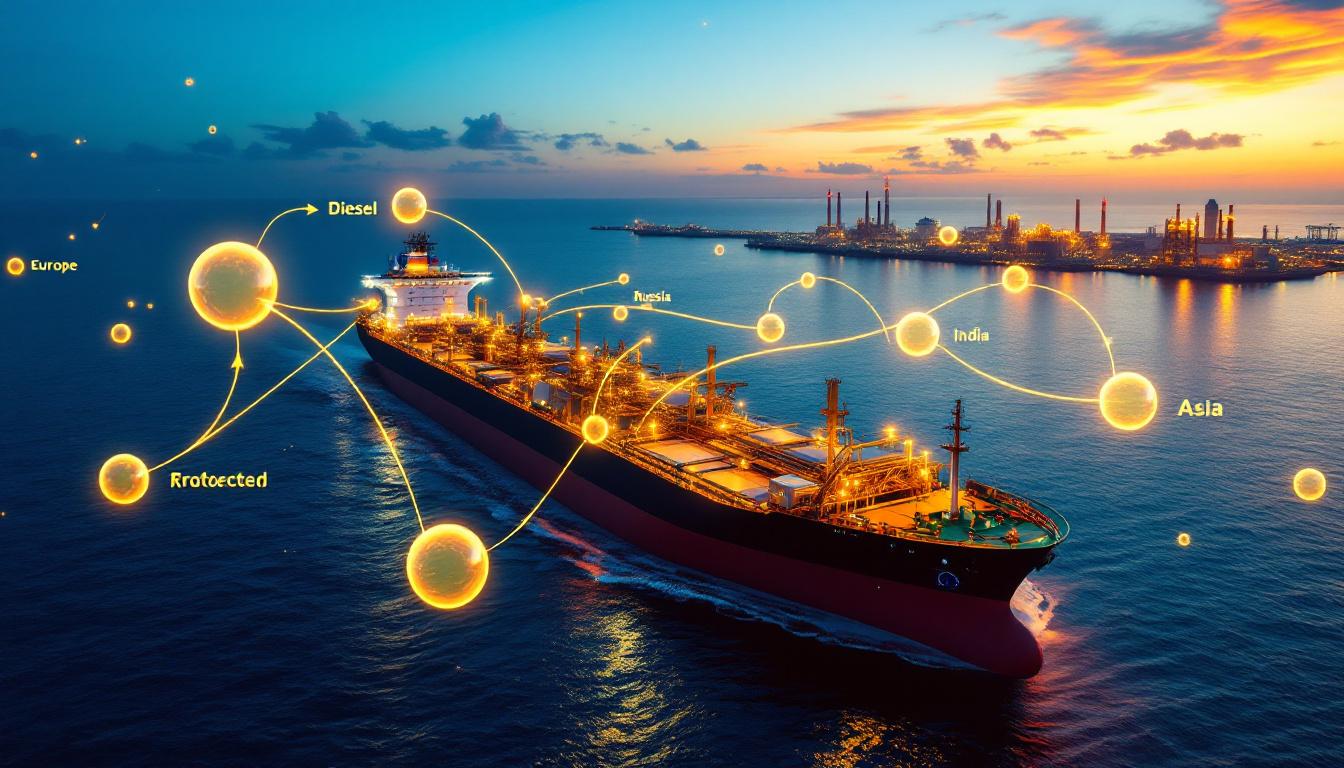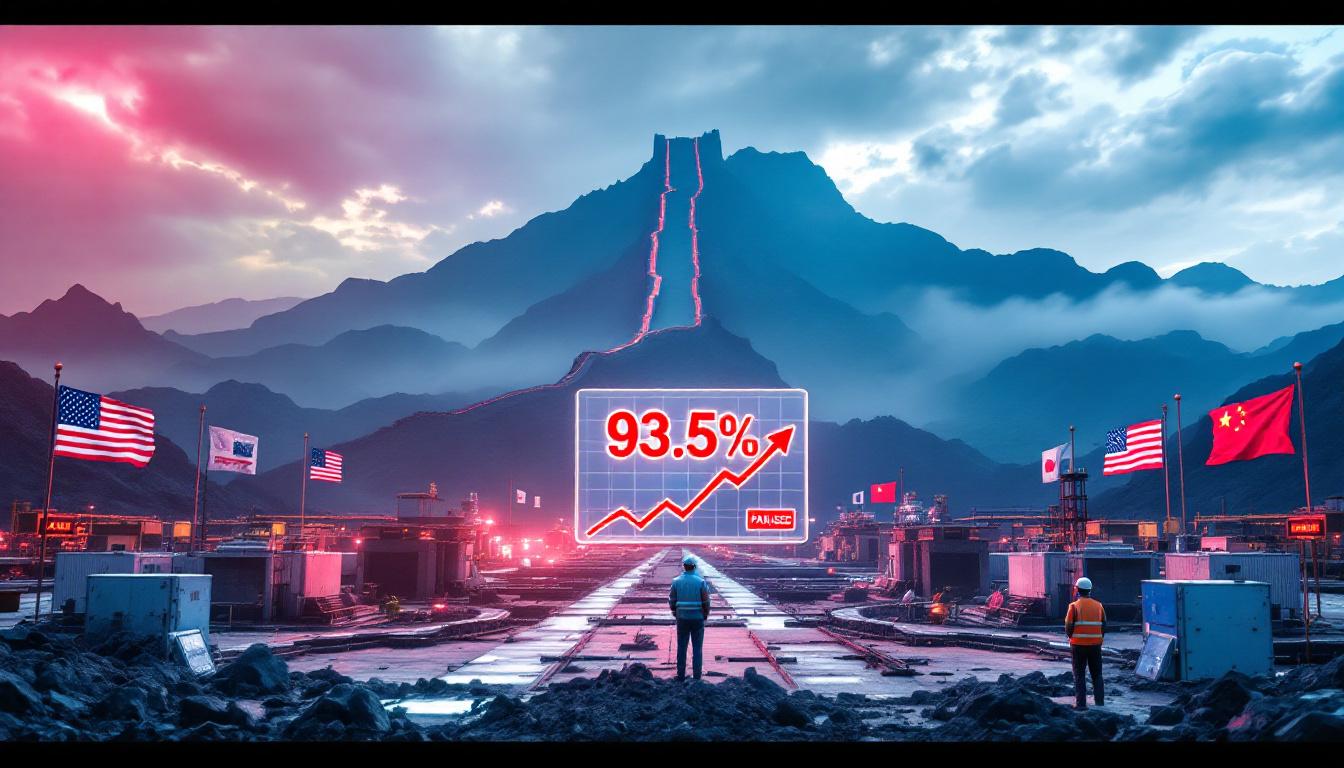Global Uranium Reserves: Distribution, Extraction Costs, and Future Outlook in 2025
What Are Uranium Reserves and How Are They Measured?
Uranium reserves represent the economically extractable quantities of uranium available globally. Unlike many other natural resources, uranium measurements are qualified by the cost of recovery, which provides a more nuanced understanding of practically available supplies. In 2025, global uranium reserves total approximately 12.4 million tonnes across all extraction cost categories, with the most economical reserves (<$40/kgU) accounting for 3.2 million tonnes.
Understanding Uranium Reserve Classifications
Uranium reserves are categorized into four primary cost tiers that reflect the economic viability of extraction:
- <$40/kgU: The most economically viable reserves, totaling 3.2 million tonnes globally
- <$80/kgU: 5.8 million tonnes accessible at moderate costs
- <$130/kgU: 8.6 million tonnes requiring more advanced extraction techniques
- <$260/kgU: 12.4 million tonnes representing the total identified resources
These classifications, established by the International Atomic Energy Agency (IAEA), provide a standardized approach to quantifying global supplies. Reserves are measured in tonnes uranium (U), with 1 tonne equaling 1,000 kg or approximately 2,204.6 lbs.
One of the most fascinating aspects of uranium reserves is their tendency to increase over time despite ongoing extraction. As nuclear engineer Bernard Cohen once noted, "Uranium reserve figures are more a function of exploration budgets than geological reality." This counterintuitive phenomenon occurs as technological advancements improve detection capabilities and make previously uneconomical deposits viable.
Factors Affecting Uranium Accessibility
Uranium is relatively abundant in the Earth's crust—about as common as tin or zinc—but typically dispersed at low concentrations of 2-4 parts per million. This dispersion creates significant challenges for economical extraction.
"The grade of uranium ore is the primary determinant of extraction costs," explains Dr. Thomas Neff of the Massachusetts Institute of Technology. "A deposit with 1% uranium content yields ten times more uranium per tonne of ore than one with 0.1%."
Key factors influencing accessibility include:
- Geological formation (sandstone, granite, volcanic)
- Deposit depth and configuration
- Concentration levels (economical deposits typically exceed 0.1%)
- Infrastructure accessibility
- Regulatory environment and permitting processes
Modern exploration techniques, including satellite spectroscopy and AI-assisted geological modeling, have revolutionized the identification of new deposits. These technologies have enabled countries like Kazakhstan and Mongolia to substantially increase their known reserves in recent years through Mongolia-Orano uranium project insights.
Which Countries Have the Largest Uranium Reserves in 2025?
The global distribution of uranium reserves reveals significant concentration among a few resource-rich nations. Australia leads with nearly 30% of the world's identified resources, followed by Kazakhstan, Canada, Russia, and Namibia. This concentration creates both opportunities and strategic concerns in the global nuclear fuel market.
Top 5 Countries by Total Uranium Reserves
Australia maintains its long-held position as the uranium superpower with 3.6 million tonnes of uranium reserves across all cost categories. What makes Australia particularly notable is the high quality of its reserves—1.7 million tonnes are accessible at the lowest extraction cost tier (<$40/kgU).
The top five uranium-rich countries in 2025:
- Australia: 3.6 million tonnes U (29% of global reserves)
- Kazakhstan: 2.9 million tonnes U (23.4%)
- Canada: 1.7 million tonnes U (13.7%)
- Russia: 1.2 million tonnes U (9.7%)
- Namibia: 1.0 million tonnes U (8.1%)
The Olympic Dam mine in South Australia remains the world's largest single uranium deposit, containing approximately 2.5 million tonnes of uranium oxide. Despite this enormous resource, Australia ranks only third in actual production, highlighting the distinction between reserves and production capacity.
Kazakhstan, while second in reserves, leads global production with approximately 21,000 tonnes annually—nearly 40% of worldwide output. The country's dominance in production despite smaller reserves stems from its extensive use of in-situ leaching (ISL), a cost-effective extraction method well-suited to Kazakhstan's geology. For a detailed understanding of global production methods, see this comprehensive guide to uranium deposits and mining.
Regional Distribution of Major Uranium Reserves
Uranium reserves exhibit distinct regional patterns that shape global nuclear fuel markets:
- Oceania: Dominated by Australia with 3.6 million tonnes, representing almost all of the region's reserves
- Central Asia: Kazakhstan leads with 2.9 million tonnes, followed by Uzbekistan (388,200 tonnes)
- North America: Canada holds 1.7 million tonnes with the United States at 180,600 tonnes
- Africa: Multiple countries share significant reserves, including Namibia (1.0M), South Africa (993.6K), Niger (793.7K), and Botswana (174.4K)
- Europe: Various countries with smaller reserves including Ukraine (364.4K), Czech Republic (119.9K), and Spain (75.0K)
This regional distribution creates geopolitical interdependencies, particularly for nuclear-powered nations with limited domestic resources. France, which generates approximately 70% of its electricity from nuclear power, imports most of its uranium from Niger and Kazakhstan, creating strategic vulnerabilities.
The concentration of high-quality, low-cost reserves in politically stable Australia provides a significant advantage for global energy security. As noted by the World Nuclear Association, "Australia's reserves are not just large in volume but accessible under stable regulatory and political conditions, making them particularly valuable to the global market."
How Do Extraction Costs Impact Available Uranium Resources?
The economics of uranium extraction fundamentally shapes the global supply landscape. As extraction costs rise, the volume of economically viable reserves decreases dramatically. This cost sensitivity means that market prices directly influence the world's "accessible" uranium resources.
Low-Cost Extraction Reserves (<$40/kgU)
Low-cost uranium reserves represent the most economically attractive resources and form the backbone of current production. These deposits typically feature high-grade ore, favorable geology, and proximity to processing infrastructure.
Countries with significant low-cost reserves include:
- Australia: 1.7 million tonnes accessible at lowest extraction cost
- Kazakhstan: 502,000 tonnes
- Canada: 292,400 tonnes
- Brazil: 138,100 tonnes
- South Africa: 228,000 tonnes
The predominance of these low-cost reserves in politically stable countries provides an important buffer against supply disruptions. However, these premium resources represent only about 25% of total identified uranium.
"At current consumption rates of approximately 63,000 tonnes annually, the world's lowest-cost reserves would last about 50 years," notes the OECD Nuclear Energy Agency. "However, price fluctuations can dramatically alter this estimate by making higher-cost reserves economical."
Medium-Cost Extraction Reserves (<$80/kgU to <$130/kgU)
The medium-cost extraction categories contain significantly larger volumes of uranium:
- Australia: 2.0 million tonnes at <$80/kgU
- Kazakhstan: 732,100 tonnes at <$80/kgU and 815,200 tonnes at <$130/kgU
- Canada: 588,500 tonnes at <$80/kgU and 865,400 tonnes at <$130/kgU
- Russia: 480,900 tonnes at <$80/kgU and 656,900 tonnes at <$130/kgU
- Namibia: 470,100 tonnes at <$80/kgU and 509,500 tonnes at <$130/kgU
These medium-cost reserves become economically viable when uranium prices rise above $80/kgU, effectively acting as a price ceiling in the market. When prices approach this threshold, previously uneconomical mines become operational, increasing supply and moderating price growth.
The mining method significantly impacts extraction costs. In-situ leaching (ISL), which pumps solution directly into permeable ore bodies, costs $30-60/kgU in favorable conditions. By contrast, conventional underground mining typically costs $80-130/kgU. This cost differential explains Kazakhstan's production dominance despite smaller reserves, as its geology favors the more economical ISL method.
Comparative Analysis of Cost-Effectiveness by Country
The distribution of reserves across cost categories reveals important strategic differences between uranium-rich nations:
- Australia maintains the largest reserves across all extraction cost categories, with nearly half of its resources available at the lowest cost tier
- Kazakhstan has a higher proportion of its reserves accessible at lower cost points than other top countries, explaining its production leadership
- Russia's reserves are predominantly in higher cost categories, with only a small proportion accessible at low cost
- Countries like Denmark and Jordan only have reserves in higher extraction cost categories (>$130/kgU), making them uneconomical at current prices
Environmental regulations significantly impact extraction costs. Canadian operations face environmental compliance costs averaging $12-18/kgU, whereas Kazakhstan's environmental requirements add approximately $5-7/kgU to production costs.
As uranium prices fluctuate, the global reserve picture shifts accordingly. This market sensitivity creates important strategic uranium investment opportunities for investors who understand the relationship between price movements and economically viable reserves.
What Are the Strategic Implications of Uranium Reserve Distribution?
The concentrated nature of uranium reserves creates significant geopolitical dynamics in global energy markets. Countries with substantial uranium resources possess strategic advantages in both energy security and diplomatic leverage, while uranium-dependent nations must carefully manage supply vulnerabilities.
Nuclear Power Generation Capacity
Nuclear power provides approximately 10% of global electricity from over 440 nuclear reactors worldwide. The distribution of uranium reserves directly impacts countries' ability to maintain energy independence through nuclear programs.
Nations with substantial domestic reserves like Canada (which meets 85% of its uranium needs internally) enjoy greater energy security than import-dependent countries. Japan, which generates about 10% of its electricity from nuclear despite having minimal domestic uranium, must maintain diverse supply relationships to mitigate disruption risks.
The strategic equation is evolving as China aggressively expands its nuclear capacity. With 55 reactors operating and 21 under construction in 2025, China has increased its uranium imports by 35% since 2020. This growing demand has prompted Chinese investments in uranium projects across Central Asia and Africa to secure future supplies.
As nuclear expert Mark Hibbs notes, "Access to uranium is becoming a critical component of energy security planning, particularly as countries seek to reduce carbon emissions while maintaining reliable baseload power."
Military and Defense Applications
Uranium's dual-use potential for both civilian energy and weapons programs creates unique strategic considerations. Countries with domestic uranium reserves possess a key ingredient for potential nuclear weapons development, though international safeguards closely monitor uranium usage.
Nuclear weapons states maintain strategic uranium stockpiles separate from civilian reserves. The United States National Uranium Reserve, established in 2020, holds approximately 6,800 tonnes of uranium for defense purposes. Similarly, Russia maintains a classified military uranium stockpile estimated at 15,000-20,000 tonnes.
The International Atomic Energy Agency (IAEA) safeguards system provides oversight of uranium utilization through comprehensive agreements with 175 countries. These agreements require full accounting of uranium movements and allow for inspections to verify peaceful use.
Geopolitical Power Dynamics
Control of significant uranium reserves provides countries with diplomatic leverage that extends beyond the nuclear sector. This resource power manifests in several ways:
- Resource nationalism: Countries like Kazakhstan have implemented export restrictions during periods of market tightness to maximize national benefits
- Investment conditions: Namibia's 2024 mining law reforms require increasing local ownership stakes in uranium projects
- Bilateral agreements: Australia's uranium exports to India required special provisions given India's non-signatory status to the Nuclear Non-Proliferation Treaty
For importing nations, supply chain security concerns drive diversification strategies. South Korea, which imports 100% of its uranium needs, maintains supply agreements with six different producing countries to mitigate disruption risks.
"Uranium has become the new oil in terms of energy geopolitics," observes Dr. Emily Fisher of the London School of Economics. "Countries are increasingly viewing uranium reserves by country in 2025 as strategic assets to be protected and leveraged for national advantage."
How Are Emerging Markets Positioned in the Global Uranium Landscape?
While established players dominate the uranium market, several emerging nations are positioning themselves to capitalize on their previously overlooked uranium resources. Technological advancements, rising uranium prices, and growing nuclear energy demand have opened opportunities for newcomers in the global uranium supply chain.
Rising Players in Uranium Reserves
Several countries have emerged as potential significant contributors to future uranium supplies:
- Mongolia: 306,100 tonnes total reserves with 144,600 tonnes accessible at <$130/kgU
- Tanzania: 163,200 tonnes total with 58,200 tonnes at <$130/kgU
- Botswana: 174,400 tonnes with 87,200 tonnes at <$130/kgU
Mongolia's uranium potential has attracted particular attention. The Dornod and Gurvanbulag deposits in eastern Mongolia contain high-grade uranium resources that could support production of 5,800 tonnes annually by 2030. Chinese and Russian companies have already invested over $500 million in Mongolian uranium exploration since 2021.
Tanzania represents Africa's newest uranium frontier, with the Mkuju River project containing an estimated 58,200 tonnes of uranium accessible at <$130/kgU. French nuclear company Orano (formerly Areva) has formed a $700 million joint venture to develop this resource, though regulatory uncertainties have delayed production.
Countries with Limited but Strategic Reserves
Several countries possess smaller but strategically significant uranium resources:
- Vietnam: 3,900 tonnes
- Guyana: 4,600 tonnes
- Paraguay: 8,800 tonnes (4,400 tonnes at <$130/kgU)
- Mexico: 8,700 tonnes (5,000 tonnes at <$130/kgU)
Though modest in global terms, these reserves can significantly impact national energy strategies. Paraguay's uranium resources, for instance, could potentially support its first nuclear power plant, currently under consideration through a cooperation agreement with Argentina.
Vietnam's limited reserves haven't deterred its nuclear ambitions. The country has signed supply agreements with Kazakhstan and Australia to support its planned nuclear program, demonstrating how even uranium-poor nations can develop nuclear capacity through strategic partnerships.
Investment and Development Potential
Emerging uranium markets present both opportunities and challenges for investors. Uranium mining market analysis reveals several important trends:
- Technological advantages: New producers can implement state-of-the-art extraction methods without legacy infrastructure constraints
- Regulatory evolution: Countries like Tanzania and Botswana have updated mining codes specifically to attract uranium investment
- Infrastructure limitations: Many emerging producers face significant transportation and processing bottlenecks
Foreign investment has proven crucial for developing these emerging uranium sectors. China's state-owned nuclear companies have invested $3.2 billion in uranium projects across emerging markets since 2020, securing future supply lines for China's expanding nuclear fleet.
Recent exploration projects have yielded promising results, including high-grade uranium discoveries at Portland Creek in Newfoundland, demonstrating that even mature mining jurisdictions can yield new uranium resources.
What Is the Future Outlook for Global Uranium Reserves?
The long-term outlook for global uranium resources reflects a dynamic interplay between technological innovation, changing market demands, and environmental considerations. While current identified reserves appear sufficient for decades, the future availability of uranium will be shaped by extraction advancements, nuclear technology evolution, and shifting energy priorities.
Technological Advancements in Uranium Extraction
Innovations in uranium detection and recovery continue to expand economically viable reserves:
- Advanced geophysical mapping has increased identified reserves by approximately 15% since 2020
- Improved extraction technologies, particularly for low-grade ores, have reduced costs by 8-12% over the past five years
- Artificial intelligence applications in mining operations have optimized recovery rates by up to 7%
Perhaps the most revolutionary development involves oceanic uranium extraction. The world's oceans contain an estimated 4.5 billion tonnes of uranium—nearly 500 times current land-based reserves. Japan's Marine Uranium Recovery Project has demonstrated extraction capabilities at $300/kgU, though costs must fall below $180/kgU for commercial viability.
"Seawater uranium represents the ultimate reserve backstop," explains Dr. Masao Tanaka of Japan's Atomic Energy Agency. "While not economical today, it effectively eliminates any long-term supply concerns for nuclear energy."
Resource extraction from non-traditional sources is also advancing. Phosphate rock contains uranium concentrations of 50-200 ppm, and uranium recovery from phosphate mining could potentially yield 5,000-10,000 tonnes annually as a byproduct.
Sustainability
Ready to Identify the Next Major Mineral Discovery?
Discover significant ASX mining opportunities before the market with Discovery Alert's proprietary Discovery IQ model, which instantly analyses and notifies you of high-potential mineral announcements. Explore our dedicated discoveries page to understand why major mineral findings have historically generated substantial returns, and position yourself ahead of the market.




